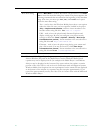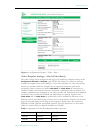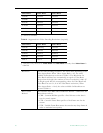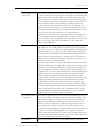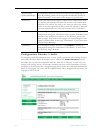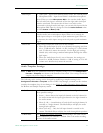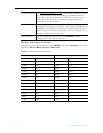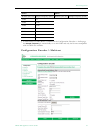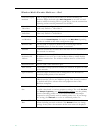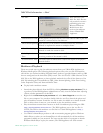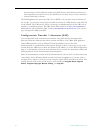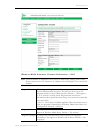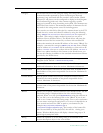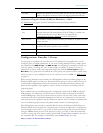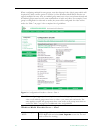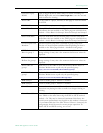
36 © 2008 VBrick Systems, Inc.
Windows Media Encoder Multicast -- Slot1
Click here to play
multicast
Click to trigger Windows Media Player to initiate streaming via
multicast. Right-click and select
Save Target As to save the .asx and
send to others for viewing. This is a good way to view the stream when
adjusting various encoder parameters via the IWS.
Select Multicast
Video Rate
Select from the configured video rates or choose None to multicast
audio only. Default = Video Rate1.
Select Multicast
Audio Rate
Select from the configured audio rates or choose None to multicast
video only. Default = Audio Rate1.
Closed Caption
and Metadata
Controls whether or not script data is included in the multicast. Script
data includes
Closed Caption data and/or user Meta Data depending
on what is enabled on the video configuration page.
Multicast URL Use this URL in a player or browser (or on a web page with an
embedded player) to view the stream via multicast.
Transmit Controls whether the encoded video and audio is to be transmitted to
the network via multicast.
Multicast
destination IP
Address
This is the destination IP Address of the encoded video. By default the
IP Address is set to 127.0.0.1 (the localhost address) which disables
multicast transmission. The multicast address must be a Class D IP
address.
Destination Port Sets the UDP video destination port.
Time To Live The number of hops (between routers) for which an IP packet is valid
on the network.
Type Of Service The TOS (Type of Service) can be configured in the IP header to
establish packet priority in the network.
Join Own Multicast Some network equipment requires that a Multicast source (such as a
VBrick encoder) join its own Multicast group. This feature is enabled
by default and has no adverse affect on equipment that is fully
Multicast-compliant.
Maximum Packet
Size
The Windows Media packet size is automatically set to the smallest
possible value based on various parameter settings. The audio
Bit Rate
and
Sample Frequency (see Audio Template Settings) are the primary
factors controlling packet size. Lower audio Bit Rates and Sample
Frequencies will generally result in smaller packet sizes. If you change
this setting, click
Refresh to see the re-calculated packet size.
Estimated Total Bit
Rate
Reports the calculated estimated maximum bit rate for the multicast
stream including network overhead. Click
Refresh when you change
settings. It may take a few moments before new values are displayed.



